Are beef producers holding out for a price rebound?
Key points
- 46% of producers sold fewer animals than expected in April 2025
- Seasonal challenges in southern regions impacted readiness and sales decisions.
- Some producers sold more than planned to reduce feeding costs, respond to stronger prices, or manage cash flow.
New data from the July 2025 Beef Producers Intensions Survey (BPIS) showed 46% of Australian cattle producers sold fewer animals than planned, highlighting ongoing challenges facing the livestock industry.
One of the most common reasons for lower sales was that cattle weren’t ready. Over 40% of producers said their cattle hadn’t reached sale weight, largely due to tough seasonal conditions – especially in southern regions. Limited pasture availability and rising feed costs meant many producers were forced to delay sales.
Weather and feed issues weren’t the only contributing factors. Anticipation of better market conditions was also given as a reason producers held onto cattle. Approximately 21% chose to delay selling because they believed prices would improve, while another 17% reported that prices at the time weren’t strong enough to justify selling. Meanwhile, 14% of producers had fewer cattle to sell than expected – a flow-on effect of earlier production decisions and seasonal impacts.
The data also showed that while a significant portion sold less, 21% of producers sold more cattle than planned. The main reason for this (33%) was to reduce animal feeding costs over longer periods. Others (29%) were prompted by weather to bring sales forward, while 25% said prices were stronger than expected and 21% needed to generate cash flow. A small portion (12%) had more cattle to sell due to higher-than-expected production, particularly those in the northern Australia.
A total of 33% of producers reported their sales matched expectations.
This snapshot reveals the variety of producer experiences in 2025. While some are reacting to short-term seasonal and market pressures, others are making longer-term strategic decisions based on price forecasts and production cycles. The data also highlights the impact of weather and input costs (particularly feed) on national producer behaviour.
As the year progresses, producers’ management of weight gain, market timing and cash flow will remain key to navigating ongoing uncertainty.
To gain more insights about the cattle industry, register for the MLA September Cattle Projections here.
| As part of the Beef Producers Intentions Survey (BPIS), producers are invited to complete the new online survey if they completed the April 2025 survey. The July wave aims to assess producers’ 12-month intention, estimate the autumn calf drop and expected sales. |
Attribute content to Emily Tan, MLA Market Information Analyst



